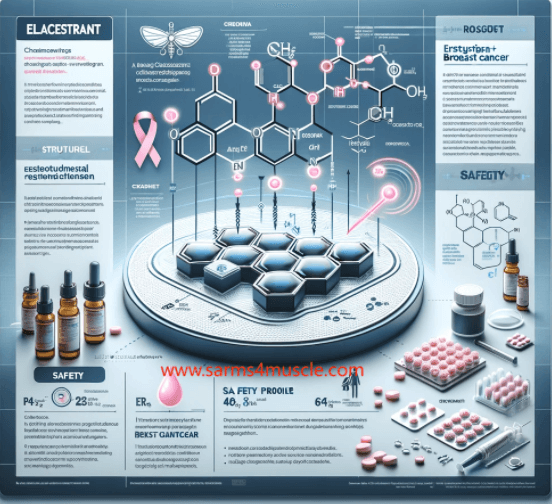A new selective estrogen receptor degrader (SERD) called elacestrant has shown great promise as a treatment for breast cancer. This article dives into the chemical and pharmacological characteristics of elacestrant, providing insights into its potential and location in the present cancer therapy landscape.
Trending Topic on Google Search
When looking up elacestrant online, use these terms to get the most information:
The ELASE mechanism, Elacestrant treatment for breast cancer,
Research on elacestrant for ER+ breast cancer, patient experiences with elacestrant, and the market for elacestrant.
Industry Analysis
Elacestrant is a component of a competitive environment that also contains other selective estrogen receptor-depressants (SERDs) and endocrine medications such as aromatase inhibitors, fulvestrant, and tamoxifen.
Health Advantages and Risks
Elacestate has shown potential in the management of estrogen receptor-positive (ER+) breast cancer, especially when the disease has developed resistance to initial treatment options.
Product Design Mechanism
Etoestrant promotes the degradation of estrogen receptors by binding to them and inhibiting their activity. This system is very important for stopping or slowing the growth of ER+ breast cancer cells.
Safety, Side Effects
There is ongoing research on the safety profile of elacestrant, despite the fact that it provides a new treatment approach. There is a possibility that you may have gastrointestinal issues, tiredness, and hot flashes after using this medication.
Information on Dosage
Elacetrant is usually taken orally and is dosed according to the specific requirements of each patient. Optimal doses are being determined in ongoing experiments.
Important considerations
Particular medical conditions and medications may render patients contraindicated for the use of elecestrant. Before starting, there must be a full medical exam.
In summary
Elacestrant is a game-changer for patients with ER+ breast cancer who have run out of choices because their malignancy has become resistant to prior treatments. More and more light is being thrown on its involvement in cancer therapies as a result of its continuous development and appraisal.
People Also Ask

Does Every Kind of Breast Cancer Respond Well to Elavestrant?
It is possible that elacestrant is not as successful in treating other forms of breast cancer since it is designed exclusively for ER+ breast cancer.
Is Elacestrant Compatible with Other Cancer Treatments?
Currently being researched is the use of elacestrant in conjunction with other therapies. It shows promise in terms of synergistic effects with other treatments.
For how long is Elacestrant to be taken?
How long elacestrant treatment lasts depends on how well the patient responds and how well they can handle it. Each situation is evaluated individually.
The Unique Benefits of Elacestrant Over Traditional SERDs?
With a good oral absorption, elacestrant provides a more effective and focused strategy, especially in situations of resistant ER+ breast cancer.
